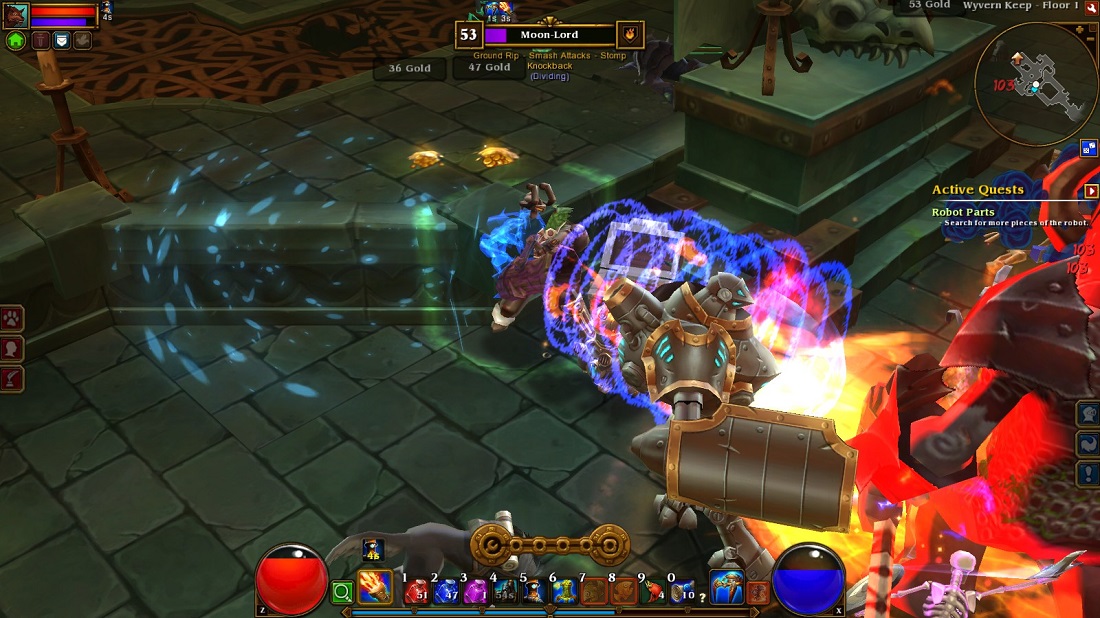Torchlight II
The most direct successor to Diablo II on the market today isn’t its sequel Diablo III. The Torchlight games have carried on that form, with several tweaks.
The most immediately noticeable aspect of Torchlight II is how colorful it is. In terms of story and setting, it has a similar tone to most other games in the genre (a hero from the previous game being corrupted and destroying all he touches is almost an identical story as Diablo II), but it does so with cartoonish bursts of color—bright blue ice-beams and red cannonballs. It’s not atonally garish, but it is immediately recognizable and compelling.
Torchlight II’s biggest selling point is its sense of character progression. Like Diablo II, TLII has distinct classes, each with multiple build possibilities. Each also feels distinct and exciting—an ice Embermage or a dual-pistol Outlander—I found myself rolling 10 characters so I could potentially play each one. Torchlight II also makes room for different decision-making while creating the characters. The distinctive visual style helps here as well—I was putting together a cannon Engineer when I realized that I’d created a sort of steampunk Big Daddy from BioShock.
Another major distinction for Torchlight II is its mod support. It’s even got a Steam Workshop page, which includes little things like minor interface tweaks as well as massive additions like SynergiesMod, which includes a robust endgame, or the Far East expansion which adds items and classes based on East Asian history and culture.
Torchlight II also plays much like it looks: fast and fun. This is a game built around running from place to place, finding massive groups of monsters, filling the screen with shiny destruction, and moving on. The controls and combat are a little looser than Diablo III, particularly in terms of sound effects feeling distant, but it doesn’t get in the way of combat feeling satisfying.
Continuing on the path of character customization leads to the next game: Path of Exile.


